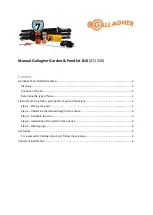
iSERIES Algorithm
D. Optimizing the CANBERRA
i
SERIES
for Air Sample Counting
The CANBERRA iSERIES family includes the
i
SOLO manual and
i
MATIC
automatic Alpha/Beta counting systems. The iSERIES uses a proprietary algorithm
(United States Patent 6,822,235) to strip the short-lived naturally occurring radon,
which would otherwise mask longer-lived radiation of concern. This section is
intended to instruct users on how to improve the analysis results
iSERIES Algorithm
The CANBERRA
i
SERIES algorithm is discussed in Mirion Technologies (Canberra)
literature. An entire algorithm manual is available from Mirion Technologies
(Canberra) (part number 9237566). This appendix will not discuss the details of the
algorithm in detail beyond what is required to optimize the results. The steps
performed by the algorithm are summarized below:
1.
Use built-in logical test to determine if the Po-212 (ThC' or Thoron, 8.78
MeV) contribution is significant
2.
Use the Peak Shape of Po-212 (ThC', 8.78 MeV) to derive correction for the
Bi-212 (ThC, 6.05 MeV) contribution.
3.
Take into account pseudo coincident beta counts in the Po-212 (ThC', 8.78
MeV) peak.
4.
Use a double exponential tail prediction function to determine the Po-212
(ThC', 8.78 MeV) contribution.
5.
Use built-in logical test to determine if the Po-214 (RaC' or Radon, 7.68 MeV)
contribution is significant.
6.
Use a double exponential tail prediction function to determine the Po-214
(RaC', 7.68 MeV) contribution.
7.
Evaluate statistical uncertainty on the corrected counts.
iMatic Automatic Counting System User's Manual - 9239221K
93
















































